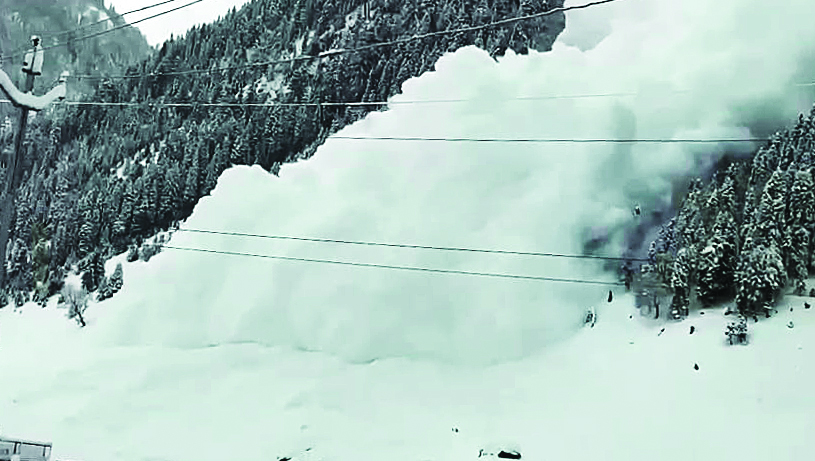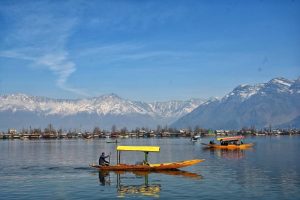
Warming Temperatures and Shifting Weather Patterns Fuel Avalanche Concerns in Kashmir
Srinagar: The Jammu and Kashmir Disaster Management Authority has been issuing frequent avalanche warnings in the higher reaches of Kashmir, advising people to take precautions and avoid venturing to the avalanche prone areas.
On February 8, a massive avalanche struck the Sonamarg area on the Srinagar-Leh Highway. Earlier, twin avalanches had struck the famous ski-resort, Gulmarg and the prompt response by the rescue teams ensured the successful evacuation of skiers, who got trapped in the avalanche.
Earlier, on February 5, a low intensity avalanche hit the Affarwat areas of Gulmarg ski resort in North Kashmir. According to officials, four skiers were in the area at the time, however none of them was trapped in the avalanche.
In the wake of escalating temperatures, winter months are witnessing a surge in avalanches across various regions, experts say. According to climate change experts the frequency of avalanches in the months of February and March has increased over the years. “The traditional wetness associated with these months, coupled with increased temperature increases the frequency of avalanches,” an expert said.
“When there is an increase in temperature, snow on the mountains, which is usually very sloppy, experiences a dangerous transformation. The melting of wet snow reduces the friction at the interface between the icy layers and rock. This reduction in friction triggers the downward sliding of snow blocks, constituting the basic phenomenon and the underlying reason for the increasing frequency of avalanches,” he added.
Experts further pointed out that J&K and Ladakh have witnessed numerous casualties, both civilian and military, due to avalanches in recent times.
Last year in February, two Polish nationals died and 19 others were rescued after a group of tourists were hit by a massive avalanche in Gulmarg. On January 29, 2023 a woman and a teenage girl were killed after they came under an avalanche in the Kargil district of Ladakh.
Studies suggest that climate change is a major driver of permafrost degradation. Permafrost is the ground that remains frozen for a longer time, sometimes upto 2 years. Warmer air temperatures would mean less winter season snow cover insulating the ground. This exposes permafrost to more heat transfer. As permafrost thaws, it causes destabilization of steep mountain slopes and terrain.
According to the Indian Meteorological Department, December recorded an unprecedented 79 percent deficit of rainfall in Jammu and Kashmir and January 2024 was one of the driest and warmest January in the last 43 years for most of the stations of Kashmir.
Ecologists and environmentalists said, due to global warming, melted snow penetrates deep within, causing the mountain slope to move rapidly. He said that the impact of global warming is evident in Kashmir, with mean minimum and mean maximum temperatures increasing over the decades and additionally, there is a decrease in precipitation, both in terms of rainfall and snowfall.
“The biggest impact is seen in the form of shorter winters and early springs. The seasonal shift affects snowfall, reducing its sustenance and freezing potential. Glaciers are receding, and the snow no longer transforms into ice masses due to early melting.”
He added that decades back, it used to be snowfall even in the months of March-April, in higher reaches it used to be huge. When snowfall used to take place in upper reaches it used to sustain and freeze. Now all that has changed.
While acknowledging the challenge of long-term avalanche prediction, experts emphasized the feasibility of short-term forecasting. He explained that while it is difficult to predict avalanches over extended periods, forecasting for shorter timeframes, ranging from days to weeks, is possible with advancements in avalanche and weather forecasting technologies.
As climate change continues to influence weather patterns in Kashmir, experts have stressed the need for research and preparedness to deal with the growing risks associated with avalanches in the region. The Early Warning Systems (EWS) can reduce the risk of avalanches. Placing these systems in dangerous regions can provide an early warning about avalanches, which can ultimately save lives.

